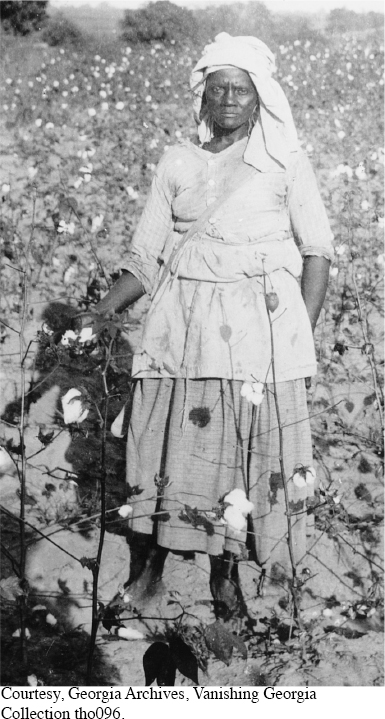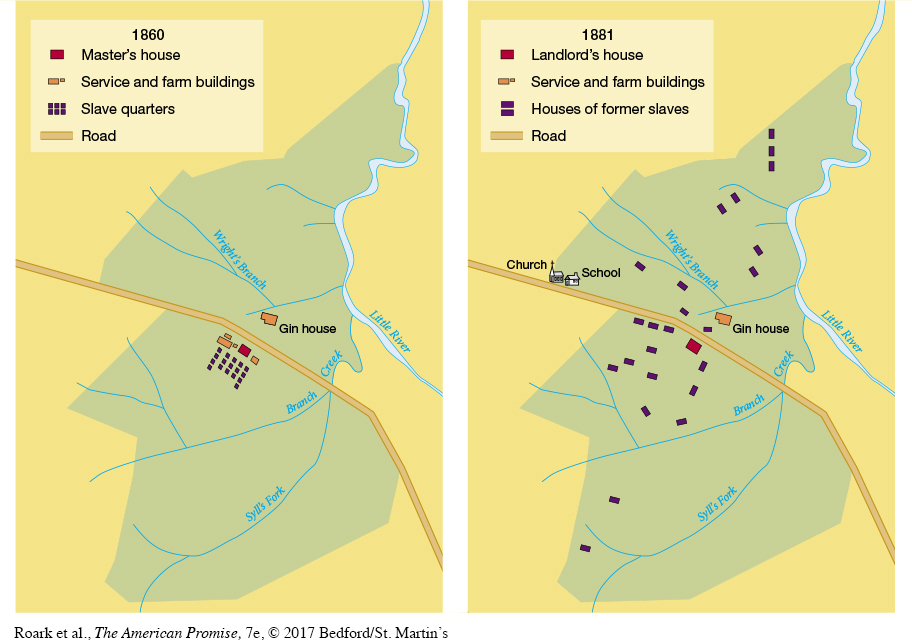The American Promise: Printed Page 457
The American Promise, Value Edition: Printed Page 416
The American Promise: A Concise History: Printed Page 476
White Landlords, Black Sharecroppers

Ex-
Ex-
The American Promise: Printed Page 457
The American Promise, Value Edition: Printed Page 416
The American Promise: A Concise History: Printed Page 476
Page 459Although forced to return to the planters’ fields, they resisted efforts to restore slavelike conditions. Instead of working for wages, a South Carolinian observed, “the negroes all seem disposed to rent land,” which increased their independence from whites. Out of this tug-
Sharecropping was a compromise that offered something to both ex-

The American Promise: Printed Page 457
The American Promise, Value Edition: Printed Page 416
The American Promise: A Concise History: Printed Page 476
Page 460Sharecropping introduced the country merchant into the agricultural equation. Landlords supplied sharecroppers with land, mules, seeds, and tools, but blacks also needed credit to obtain essential food and clothing before they harvested their crops. Under an arrangement called a crop lien, a merchant would advance goods to a sharecropper in exchange for a lien, or legal claim, on the farmer’s future crop. Some merchants charged exorbitant rates of interest, as much as 60 percent, on the goods they sold. At the end of the growing season, after the landlord had taken half of the farmer’s crop for rent, the merchant took most of the rest. Sometimes, the farmer did not earn enough to repay the debt to the merchant, so he would have to borrow more from the merchant and begin the cycle again.
The American Promise: Printed Page 457
The American Promise, Value Edition: Printed Page 416
The American Promise: A Concise History: Printed Page 476
Page 461An experiment at first, sharecropping soon dominated the cotton South. Lien merchants forced tenants to plant cotton, which was easy to sell, instead of food crops. The result was excessive production of cotton and falling cotton prices, developments that cost thousands of small white farmers their land and pushed them into the great army of sharecroppers. The new sharecropping system of agriculture took shape just as the political power of Republicans in the South began to buckle under Democratic pressure.
REVIEW How did politics and economic concerns shape reconstruction in the South?